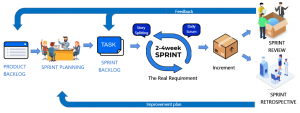- 1. A Brief Overview of ZenTao
-
2. Best Practices Comparison: ZenTao VS Jira
- 2.1 Best practices of Project in ZenTao vs Jira
- 2.2 Best practices of Workflow in ZenTao vs Jira
- 2.3 Best practices of Stories in ZenTao vs Jira
- 2.4 Best practices of Roadmap in ZenTao vs Jira
- 2.5 Best practices of Users and Roles in ZenTao vs Jira
- 2.6 Best practices of Reports in ZenTao vs Jira
- 2.7 Best practices of Dashboards in ZenTao vs Jira
- 2.8 Best practices of Search in ZenTao vs Jira
- 2.9 Best Practices of Agile in ZenTao
- 2.10 Best Practices of Waterfall in ZenTao
- 2.11 Best Practices of Automation in ZenTao vs Jira
- 2.12 Best Practices of Requirements & Test case management in ZenTao vs Jira
- 3. Use cases Comparison: ZenTao VS Jira
- 4. Get started with ZenTao
- 5. Import Jira Data to ZenTao Tutorial
- 6. Reference: Glossary of items in ZenTao VS Jira
For Agile teams
- 2022-08-04 14:33:25
- WANG JING
- 2780
- Last edited by on 2022-11-14 09:50:12
- Share links
For teams who practice agile methodologies, like Jira, ZenTao also provides scrum and kanban boards out-of-the-box. Boards provide transparency across teamwork and visibility into the status of every work item. Time tracking capabilities and real-time performance reports (burn-up/down charts, sprint reports, velocity charts) enable teams to closely monitor their productivity over time.
Jira provides agile teams: Issue tracking, Kanban boards, Customizable workflows, Project-level permissions, Estimation & work logging, Project backlogs, Progress reporting, Email notifications, Scrum boards, and Roadmaps.
Based on the Scrum framework, ZenTao covers the whole lifecycle management of software development. After the project is launched, the three project management models, Agile (Scrum), Waterfall or Kanban, can be integrated for process management according to the actual needs of project management.
- Agile Model
The Agile model is designed based on the SCRUM and is an iterative management method.
The agile model divides the project into multiple short-term iterations. By taking small steps, rapid iteration, feedback, and continuous optimization, the risk of development is minimized and the function implementation are guaranteed to fit the actual requirements.
Support
- Book a Demo
- Tech Forum
- GitHub
- SourceForge
About Us
- Company
- Privacy Policy
- Term of Use
- Blogs
- Partners
Contact Us
- Leave a Message
- Email Us: [email protected]







